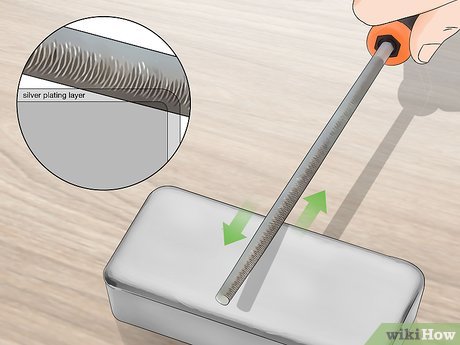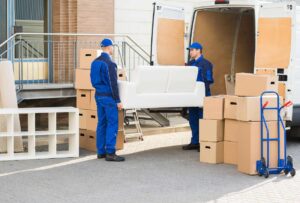
Silver is one of the most precious and valuable metals in the world. It has been used for centuries in jewelry, coins, utensils, and even for industrial purposes. With so much silver around, knowing how to test silver at home is a useful skill, whether you’re checking the authenticity of silver jewelry or antique silverware. This guide will walk you through different methods to ensure you can confidently test silver at home using easy, affordable techniques.
Silver testing is a way to check if the item you have is genuine silver or a fake, such as silver-plated or made of other metals. With the right knowledge and tools, you can test silver by yourself without needing expensive equipment or professional services. In this article, we’ll explore various methods and explain them step by step, making it easy for anyone to understand. Plus, we’ll cover how to recognize genuine silver, what tools you need, and what results to expect.
1. Understanding Silver and Its Types
Before diving into testing methods, it’s important to understand the different types of silver. Not all silver items are made from pure silver. Some items are crafted from alloys or are silver-plated. Here’s a breakdown of the main types of silver you may encounter:
- Sterling Silver: This is the most common type of silver used in jewelry and household items. Sterling silver is 92.5% pure silver, with the remaining 7.5% being another metal, often copper.
- Fine Silver: Fine silver is 99.9% pure silver and is softer than sterling silver. It’s used in high-quality jewelry and investment bars.
- Coin Silver: Historically, coins were made with 90% silver content. Today, most modern coins are no longer made from silver but may still contain silver in antique pieces.
- Silver-Plated: Silver-plated items are made from base metals such as copper or nickel and coated with a thin layer of silver. These items may look like real silver but contain much less actual silver.
- Tarnish and Patina: Genuine silver tarnishes over time, developing a dark layer of oxidation. This is normal and doesn’t affect the value, whereas fake metals do not tarnish in the same way.
By understanding the type of silver you’re working with, you can decide on the most appropriate testing method.
2. Essential Tools for Testing Silver
Testing silver at home requires a few simple tools. Most of these items can be found at a hardware store or online. Here’s what you’ll need:
- Magnet: A strong magnet is one of the easiest tools for a quick silver test.
- Acid Testing Kit: A silver testing acid kit can be used to confirm silver content based on how the metal reacts to the acid.
- Ice Cube: Ice cubes can help test the thermal properties of silver.
- White Cloth: A simple polishing cloth can test for tarnish transfer from silver.
- Magnifying Glass: Use this tool to inspect markings and hallmarks on silver items.
- Scale: Silver has a specific density, so a scale can help measure an item’s weight and compare it to the expected weight for a silver object.
Having these tools ready makes the process of testing silver straightforward and efficient.
3. Step-by-Step Methods to Test Silver at Home
Now that we’ve covered the basics, let’s dive into the methods for testing silver at home. Here are five reliable techniques you can use:
Magnet Test
Silver is not magnetic, so a magnet test is a good way to check if the item is made of silver or another material. Here’s how to do it:
- Hold a strong magnet close to your silver item.
- If the magnet sticks, the item is not silver. It’s likely made of another metal, such as steel or nickel.
- If the magnet doesn’t attract, it may still be silver or a non-magnetic metal like aluminum. This test is useful but not conclusive, so you should combine it with other methods.
Ice Cube Test
Silver has excellent thermal conductivity, meaning it transfers heat very quickly. The ice cube test is a simple way to check this property:
- Place an ice cube on top of the silver item.
- Genuine silver will cause the ice to melt much faster than it would on a regular metal surface.
- If the ice melts slowly, your item might not be silver.
Hallmark and Markings Check
Most real silver items will have stamps or hallmarks indicating their purity. Common hallmarks include:
- “925”: Indicates sterling silver (92.5% pure silver).
- “999”: Indicates fine silver (99.9% pure silver).
- “800”: Indicates coin silver (80% pure silver).
Use a magnifying glass to check for these markings, usually found on the underside of silverware or inside jewelry bands. Be cautious, as fakes can also have false markings. Always combine this method with others.
Tarnish Test
Silver tarnishes over time when exposed to air and sulfur. You can test tarnish in two ways:
- Rub Test: Take a white cloth and rub the silver piece gently. If black marks appear on the cloth, it is likely silver because silver tarnish transfers when polished.
- Visual Inspection: Genuine silver will tarnish into darker shades, while silver-plated or other metals may have different tarnish or none at all.
Acid Test
For the most reliable home testing, a silver acid test kit is highly recommended. Follow these steps:
- Purchase an acid test kit specifically for silver.
- Scratch a small, inconspicuous area of the silver item.
- Apply a drop of acid to the scratched area and observe the color change.
The color that appears after the acid reacts with the metal indicates the silver content:
- Dark red indicates sterling silver.
- Brown indicates low-quality or silver-plated items.
- Green or blue means the item is not silver at all.
The acid test is one of the most accurate ways of testing silver at home, but it should be done with care as it can slightly damage the surface of the item.
4. What to Do If Your Item Isn’t Silver
After testing silver using one or more of these methods, you may discover that your item isn’t made of silver. Don’t be discouraged; it’s still valuable to know what you’re dealing with. Here are some common outcomes:
- Silver-Plated Items: These items have a thin layer of silver coating a base metal. They may have aesthetic value but are worth much less than genuine silver.
- Stainless Steel or Nickel: Some items may be made from other metals that resemble silver. These metals are durable and often used for cutlery and decorative items but lack the value of silver.
- Fakes: Unfortunately, there are fake silver items on the market. If your tests show no signs of genuine silver, it’s likely a counterfeit or imitation.
If you discover that your item is silver-plated or a different metal, you may still choose to keep it for its beauty or utility, but it’s important to know that it’s not as valuable as pure silver.
5. Conclusion
Testing silver at home is an easy and important process, whether you’re looking to verify the authenticity of jewelry, cutlery, or decorative items. With the right tools and knowledge, anyone can test silver and avoid being misled by fakes or silver-plated items.
By using methods like the magnet test, ice cube test, hallmark check, tarnish test, and acid test, you can determine the purity of silver with confidence. Each of these methods provides insight into the composition of your silver, helping you distinguish between real silver and imitation metals.
FAQs
What is the easiest way to test silver at home?
The magnet test is one of the easiest methods. Silver is not magnetic, so if the magnet sticks, the item is not real silver.
Can I test silver with household items?
Yes! You can use an ice cube for the thermal conductivity test, a white cloth for the tarnish test, and a magnet to check for non-silver metals.
How can I tell if silver is real without damaging it?
Non-invasive methods like the ice cube test or checking for hallmarks allow you to test silver without causing damage.
What should I do if my silver fails the test?
If your silver item doesn’t pass any of the tests, it’s likely silver-plated or made from another metal. You can still keep it for aesthetic or practical reasons but be aware of its lower value.
Can I sell silver after testing it at home?
Yes, once you’ve verified the authenticity and purity of your silver, you can sell it with confidence, knowing its value in the market.




